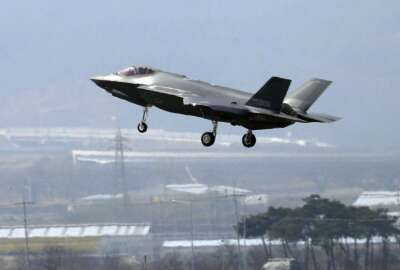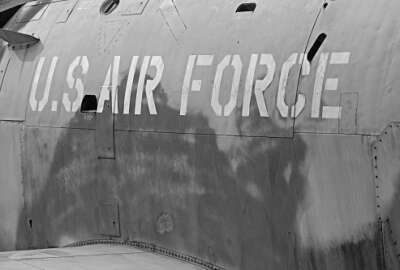
Air Force asks airmen to help revitalize squadrons
The Air Force is asking airmen to log in online to comment, share and vote on ideas that will better its squadron units. The crowdsourcing initiative is part of...
Update: Airmen can go directly to the Air Force’s crowdsourcing site by visiting https://www.milsuite.mil/revitalize.
The Air Force is calling on its airmen to help revitalize the fundamental structure and makeup of its squadrons.
The service is asking airmen to log in online to comment, share and vote on ideas that will better its squadron units.
The crowdsourcing initiative is part of a larger push started by Air Force Chief of Staff Gen. David Goldfein to fundamentally change the service.
“Several of the recent changes in Air Force programs affecting squadron personnel were the direct result of airmen in the field providing feedback under this focus area,” Brig. Gen. Stephen L. Davis, head of the Revitalizing Air Force Squadrons Task Force, said. “Our team will conduct additional base visits, but the Squadron Revitalization Idea Site provides an opportunity for the voice of every airman to be heard and included in the decision making process as we continue to improve the squadron as the core unit of the Air Force.”
The Squad Revitalization Task Force has already conducted 12 base visits and interviewed more than 1,000 airmen.
Airmen will have about a month to log onto www.milsuite.mil to share their ideas.
Goldfein announced the creation of three task forces last fall.
Those task forces focus on squadron structure and makeup, joint training and intelligence integration, and are four year efforts.
“They are each significant in scope and scale and each of them are going to require a partnership across the joint force, across the major commands, across the allies, with our industry partners. Each of these is a pretty significant effort,” Goldfein said.
Squadron units barely changed in the past half century.
“When we talk about revitalizing squadrons, we aren’t talking about taking money and manpower and throwing them at this issue; quite frankly, we don’t have it. This is to step back and ask ourselves the fundamental question, ‘What does a 21st-century squadron need to look like?’ I think it looks different. I think there may be a civilian/military mix to it. … We have one Air Force with three components that are joined at the hip and we ought to look at that at the squadron level and see if there is a different mix we ought to look at,” Goldfein said.
The Air Force already made some changes to the work airmen perform in squadrons. It cut extra duties airmen must perform and reduced some required training.
Digital Service
One of former Air Force Secretary Deborah Lee James’ last acts in that position was the creation of the Air Force Digital Service.
That service is now becoming a crucial part of the Air Force acquisition cycle.
Lt. Gen. Arnold Bunch, military deputy for the Air Force assistant acquisition secretary, said May 15 that the service is working on two programs relating to the F-35.
Bunch would not go into further detail on the programs.
The service is also working on some just-developing programs that are not performing well, but worked with U.S. Transportation Command.
“Yes, very busy. Yes, doing great things and highly valued resource we’re making sure we capitalize on,” Bunch said during a briefing at the Pentagon.
The point of the service is to build software excellence into new programs and “troubleshoot existing programs that run into difficulties associated with software. Software is frequently at the root of many of our difficulties,” James said in January.
The Air Force Digital Service is part of the Defense Digital Service, a component of the Defense Department set up by former Defense Secretary Ash Carter to bring top technology experts on board for short periods of time to solve big Defense IT problems.
The broader Defense Digital Service is seriously involved in projects ranging from the Pentagon’s collection and reporting of data on sexual assaults to the control systems that will manage the next generation of GPS to a cloud-based overhaul of the long-maligned Defense Travel System.
The service is involved in other projects as well.
The Digital Service is helping with the development waivering GPS Operational Control Segment, a program that had gone more than 25 percent over its cost estimates. It’s also working on the Air Operations Center Weapons Center 10.2, which is dealing with surging costs.
The Digital Service is working to fix software development and cybersecurity issues before future development in the programs, Bunch said. Both programs are heavily reliant on software.
Bunch has the service working with other program executive officers about their specific programs.
The service will “give us insight as to how we are doing on those programs and if there are changes that we need to make in our strategy. Our goal is to use their expertise, coupled with other experts we have within the Air Force to ensure that we start our programs off properly,” Bunch said.
Bunch said right now the service is going in and rescuing programs, but he wants to use the service as a way to start programs off on the right foot.
According to Bunch, the service will ask questions like: “Do we have the right requirements? Is industry even going to understand what we are asking them to do? Can we write the requirement in a way that they can understand and propose back to? Is it clear in the request for proposal that we are putting out what we are really asking for? Do the proposals that we have in hand show a solid level of understanding by our industry partners on how to develop the software in the proper environment that’s up to commercial standards? Are we starting the program with the right approach?”
Copyright © 2024 Federal News Network. All rights reserved. This website is not intended for users located within the European Economic Area.
Scott Maucione is a defense reporter for Federal News Network and reports on human capital, workforce and the Defense Department at-large.
Follow @smaucioneWFED





